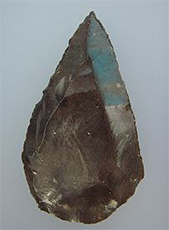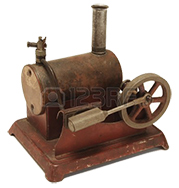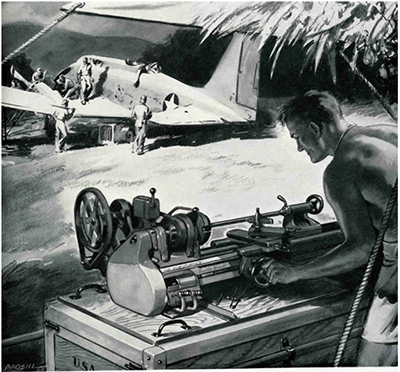In situ Machining: Origen
The machining has always been an activity closely related to the manufacture of metal equipment. Since the Copper Age, the human being learned the importance of modifying the geometries of the parts and adapting them for the purpose for which they were thought, both for ornamental reasons as well as improving their defense tools or hunting weapons.
Those first simple and rudimentary activities of prehistory were refined little by little with the help of the development of metallurgy and new materials discovery.

“In situ” Machining: Machine Tools
The great momentum of this sector, came with the industrial revolution and the incorporation of non-manuals drives and thus emerged the first machines tool. These machines were able to offer a few benefits that had never been seen to date and would change the industry forever. The progress continued in different fields of technology, but it was mainly with the electronics and the incorporation of the computers, which made these machines, high-precision equipment and essential in the industry of the developed countries.

Traditionally, the machine tool is usually linked with permanent machinery installed in the workshops, which work with metal in order to give shape and modify parts that were part of other machines and components. These workshops, apart from being engaged in the production and manufacture of components, also receive used pieces to be repaired with the help of the manning of the workshop. Although, it is true that this is -and remains- the usual way of mechanical repairs, soon it emerged the need to consider other possible mechanical solutions changing the location of the repair.

“In situ” Machining: Portable Machine Tools
Surely, this need arose in order to be able to repair equipment for military defense, when the battalion was in the front, or engineering works involving a great geographical mobility, as is the case of the railway network. The conventional concept of stationary machine tool was expanded, and thus appeared the first portable machine tool. Those machines offered the possibility of being transported to the site to run the job in-situ: Instead of carrying the damaged part to the workshop, the workshop would be to the damaged part and so, the first machined in-situ.
The machining operations and in-situ do not cease to be exactly the same, but with the great peculiarity of “in-situ”. In the vast majority of times, the on site execution involves special and unique working conditions for each intervention. For this reason, On-site machining inherently involve major challenges, not only in the design and adaptation of the portable machines, but also in the implementation and the knowledge of the own operator machinist.
The restrictions that arise at the time of developing in-situ work processes are of different nature, with special reference to space limitations affecting the robustness and stability of the portable machines. In addition, the fact of having the human equipment and materials displaced, always involves a limited provision of resources that can affect the normal development of the execution. The job must be analyzed in depth and the equipment adapted technically to the restrictive conditions of the jobs. In the human side, the workforce must be very familiar with the machine tool, the scope of work and have a great experience, both in the preparations as well as in the implementation of work in-situ.

“In situ” Machining: BENEFITS
The in-situ machining provides great advantages for customers; it allows the repair of specific components, simplifies operational and avoid the removal of the rest of the components, which results in a cost savings by the general reduction of the repair schedule.
With technological development made available to the industry and with economies that demand greater competitiveness, in-situ machining repairs a fundamental and necessary activity. The industries are developing new equipment that tend to be of greater capacity and are more complex and larger. Inexorably, these equipment are aging and claiming a non-stop maintenance to improve its efficiency and lengthen their life span. All these reasons, makes the in-situ machining an essential part of the maintenance of every and each industrial equipment.
“In situ” Machining: SECTORS
iZanda portable machine tools a specialized company in On-site Machining, throughout its long experience, has worked in the following industrial sectors:
Mecanizados insitu
Operaciones in-situ: Fresado, Torneado, Taladrado, Rectificado, Pulido, Roscado…
Some of our insitu industrial repairs


